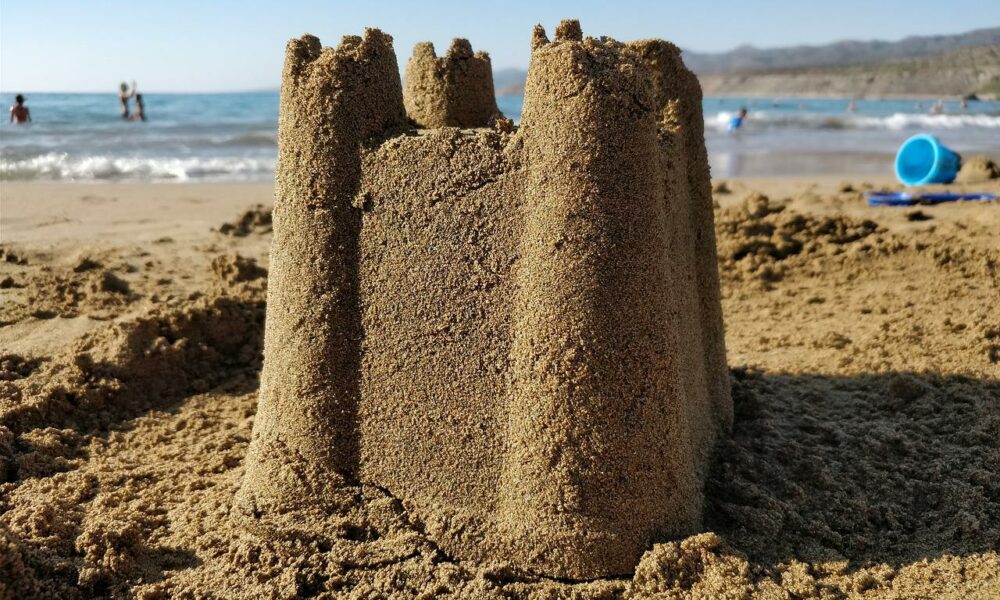Sand is one of the most used construction materials in the world. The use of sand is not just limited to construction but is also used in many other industries.
Sand is a granular substance made up of tiny mineral fragments. The sand content varies, but the grain size is what differentiates it. Sand is coarser than silt and has smaller grains than gravel. Sand can also refer to a specific type of soil or soil texture class.
Use of sand
Different types of sand are used for different jobs. The most common types of sand are:
- River sand
- Sea sand
- Manufactured sand
- Washed sand
- Mason's sand
River sand, sea sand and artificial sand are used to make concrete and other types of sand are mainly used for other construction applications.
Let's discuss each type of sand usage in detail.
Concrete production
Sand is one of the main components of concrete, along with cement and coarse aggregate. Sand is an essential fine component of concrete. Sand is an inert component of the concrete mix, but it is still essential. Increases the volume of the mortar, making it more accessible. The density of mortar and concrete is increased with appropriately graded sand. Using sand prevents the mortar from shrinking too much. As it is an inert substance, it makes the building more resistant to atmospheric influences.
grenade launcher
Mortar is created by mixing sand and cement. Cement, fine aggregates and water are the components of mortar. The mortar is used in masonry, plastering, filling, leveling floors and repairing damaged concrete buildings. As the mortar does not contain coarse aggregates (gravel) and water, cement and sand is present, it is also used to fill cracks.
Plastering
The main component of plaster is sand. Plaster consists of a mixture of sand and cement. Depending on the strength requirements of the plaster, which depend on the intended use of the plaster, the mixing proportions of sand and cement are varied. The mixing ratios (cement:sand) like 1:3, 1:5 etc. are some examples.
River sand is generally used for plastering. Plasterers use natural sand, crushed sand or crushed gravel sand in all plastering projects. Grain restrictions apply to sand used in plastering work.


Glass manufacturing
One of the most important applications in hourglass production is the use of sand. It is estimated that less than 1% of the 50 billion tons of sand extracted annually is industrial sand, which must meet the rigorous chemical and physical standards of the glass industry.
Given that the purity of the sand has a direct impact on the transparency, strength and durability of the glass, these strict criteria are necessary. Light or heat transmission requirements can only be met if the glass is made from high-quality quartz sand without compromising strength and safety.
Brick production
One of the most important uses of sand is in the production of different types of bricks.
The ideal sand for making brick concrete is building sand. It is valued and used in different types of buildings due to its cohesive properties. To produce high-quality concrete blocks, construction sand reacts effectively with cement. However, remember to mix it with crushed stone to give the bricks and blocks a rougher surface. This improves the adhesion of the plaster and the wall surface lasts longer. The addition of stone fragments helps to make the brick more resistant.
Use of sand in road construction
It should be noted that the use of sand as a base layer in its pure state represents the most economical use of the material for road construction. Using sand in this way would not normally have been considered practical in the past because the properties and capabilities of this material were not fully understood and it did not meet traditional criteria.
Sand of suitable quality can serve as a suitable construction material in all layers of the road surface if it is properly selected, tested, constructed and processed.
Silicon production
In industry, silicon dioxide is heated in a furnace with coke (a type of coal) to produce pure silicon. But Jason Stainer, an English teacher, showed me an even simpler and less economical method. You simply heat a test tube filled with a mixture of common quartz sand and magnesium powder. The oxygen atoms in silicon dioxide are absorbed by magnesium, leaving only elemental silicon.
Sand blasting
The process of violently propelling a jet of blasting material onto a surface under high pressure to smooth a rough surface, roughen a smooth surface, shape a surface, or remove contaminants from the surface is called sandblasting or sometimes sandblasting. The blasting material is driven by a centrifugal wheel or a pressurized fluid, usually compressed air.
Depending on the desired application, different processes are used, such as wet blasting, steam blasting, shot blasting, wheel blasting, micro blasting, automated blasting, dry ice blasting, bristle blasting, vacuum blasting, etc.


Artificial beach
Artificial or artificial beaches are made of sand. They are made by pumping sand onto the beach. This type of beaches are created when the land area is insufficient or there is a need to create decorative leisure areas.
Using sand as a water filter
Sand is used as a water filter. Due to its good permeability properties, it is often used to remove impurities from water. This filtration method may not be suitable for drinking.
Suspended solids, as well as floating and sinking particles, are removed by sand filtration. Wastewater flows vertically over a bed of fine sand. Particles are eliminated through physical encapsulation or absorption. If the pressure loss is too great, the filter must be washed.

